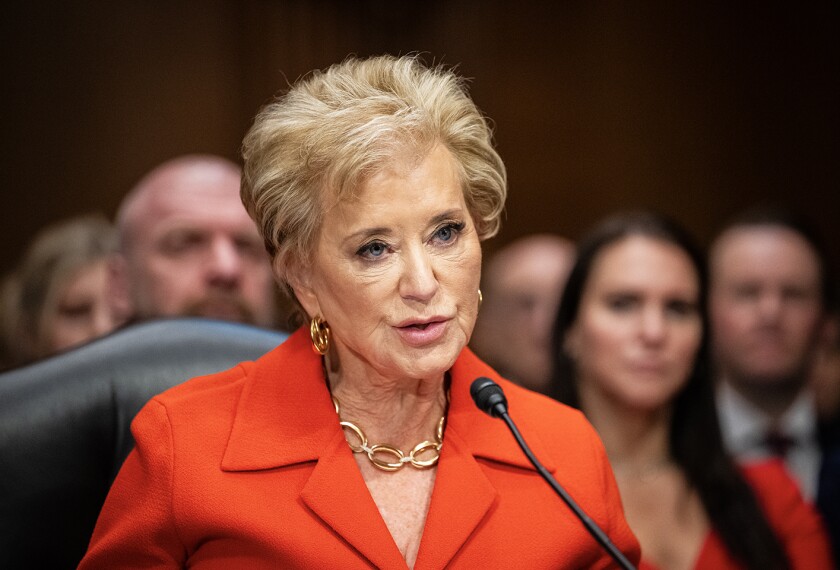The Department of Education spelled out last week how students with disabilities should be accommodated under federal requirements on school choice.
Read the draft guidance on Public School Choice, Dec. 4, 2002, from the Education Department. (Requires Adobe’s Acrobat Reader.)
Beyond that issue, the draft guidance released Dec. 4 on school choice provisions in the new federal education law appeared not to delve much into matters the department hadn’t already covered, or to offer any real surprises. The agency put out final Title I regulations late last month that codified some of the most significant requirements of the “No Child Left Behind” Act of 2001 when it comes to choice. (“Final Rules Give States Direction, Little Flexibility,” Dec. 4, 2002.)
And last June, Secretary of Education Rod Paige sent states and school districts a letter giving preliminary guidance on some of the core issues related to meeting the choice mandate.
The draft guidance, however, arrived a few months after states and school districts were supposed to first meet the school choice requirements.
Under the federal law, a revision of the Elementary and Secondary Education Act, districts must allow students to transfer out of persistently low-performing schools. A school system must use a portion of its federal Title I aid to pay the transportation costs to send those students to higher-performing schools in the district.
The draft guidance issued last week, written in a question-and-answer format, tackles 66 questions about the school choice mandate, such as the timing and duration of the option, the eligibility of students, when and how to notify parents, potential conflicts with desegregation orders, and funding.
The document makes clear that students with disabilities must be allowed to transfer out of schools that are deemed low-performing, but says districts do not necessarily have to offer them the same options as those given to students without disabilities.
“In offering choice to students with disabilities, school districts may match the abilities and needs of a student with disabilities to the possible schools that have the ability to provide the student [a free, appropriate public education],” the department writes in the draft guidance. Districts cannot send those students to another school that has been labeled low-performing, the department says.
School Responsibilities
The guidance also addresses the responsibilities of schools that receive transfer students with disabilities.
For instance, it says those schools must comply with all federal requirements relating to students with disabilities, including accessibility provisions. Also, it says the district could allow the school of choice either to implement the transfer student’s individualized education plan developed by the prior school for the new school year, or convene an IEP team and draw up a new one to meet that student’s needs.
In other areas, the guidance reiterates key aspects of the school choice requirements that the Education Department has already made clear, some of which have proved controversial. For example, the final Title I regulations say that a district cannot use lack of capacity as an excuse to deny students alternative schools to attend.
The guidance also reiterates the stipulation in the final regulations that districts provide more than one choice option.
Melinda Malico, a department spokeswoman, said that, while the guidance technically is in draft form, “People can rely on it. It is the guidance,” and department officials will consider those that follow this approach to be in compliance with the applicable federal requirements.




